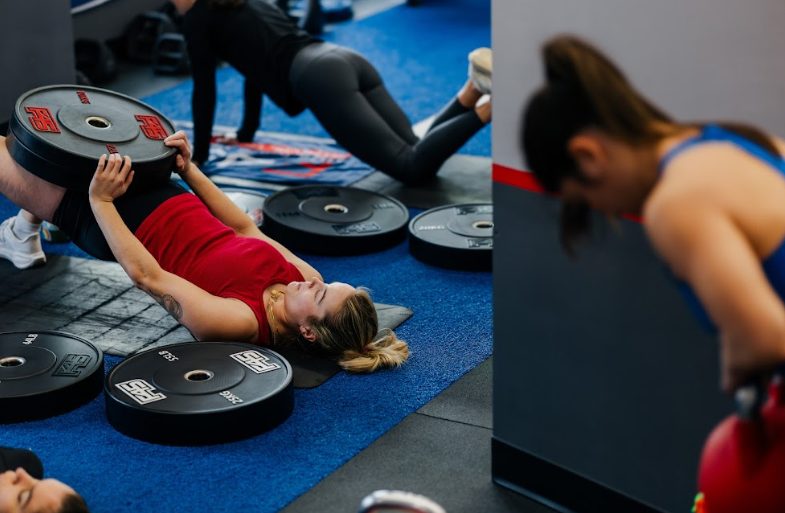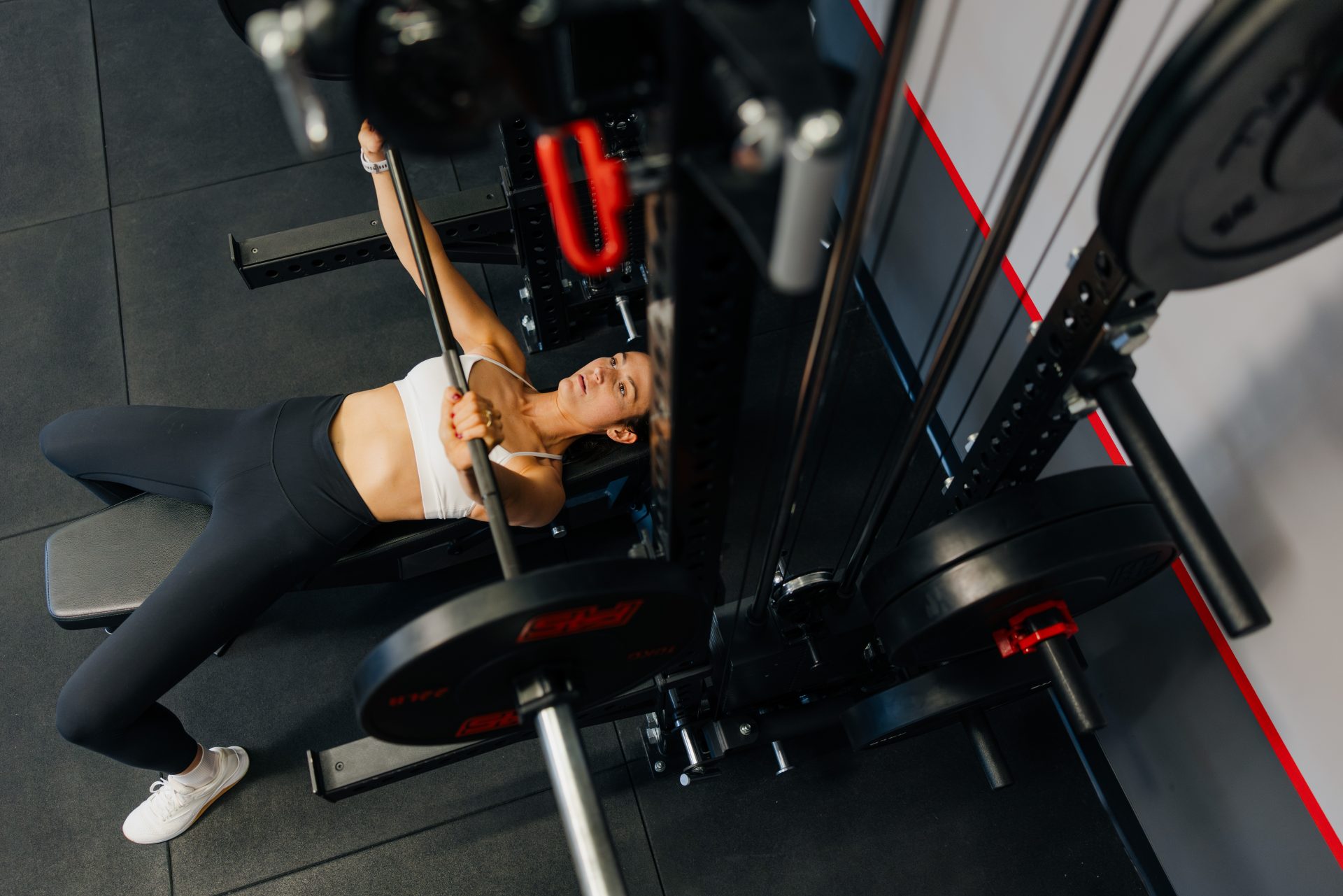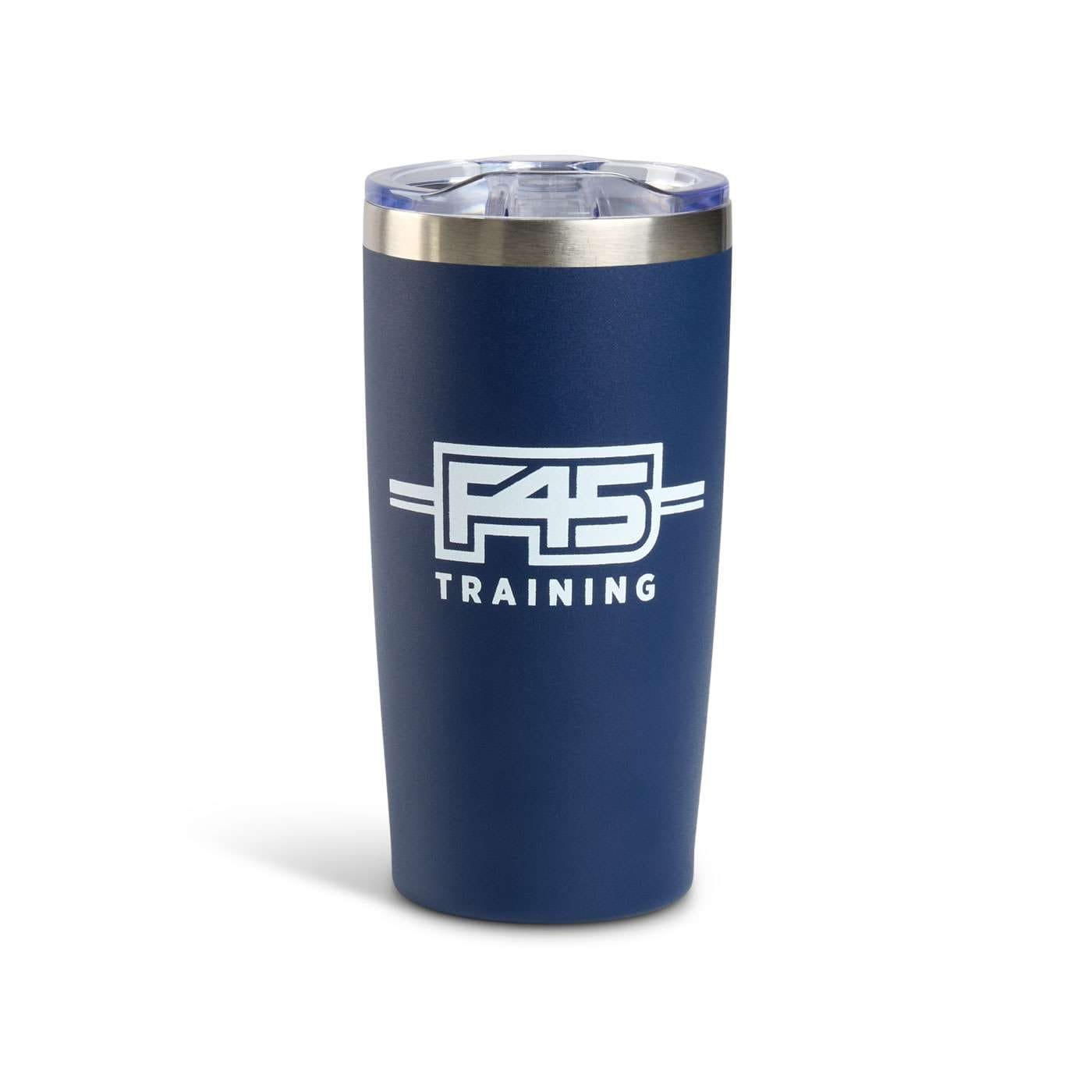Let’s get one thing straight: your worth has nothing to do with the number on the scale. For too long, women have been told to shrink. To be smaller. To be quieter. To be less. But here’s the truth: your body is capable of incredible things, and strength training helps you tap into all that power.
So, let’s get another thing straight – women’s strength training isn’t about changing your worth. It’s about discovering what your body can do, feeling confident in it, and nourishing it so it thrives at every stage of life.
Below, we’re diving deep into the science behind why muscle matters for women’s metabolism, as well as exploring how – and why – strength training for women is vital for your mental and physical health as you age. We’ll also debunk some of the most common misconceptions around lifting weights as a woman and explore the magic of functional training and HIIT for women.
Training misconceptions for women
Feeling strong in your body is one of the most empowering gifts you can give yourself – not just as you age, but at any stage of life.
Because strength isn’t just about lifting heavy weights: it’s about standing tall, moving confidently, and knowing your body can support you. Plus, research shows that women’s strength training not only improves physical function and metabolic health, but boosts mental well-being by reducing symptoms of anxiety and depression, in turn – increasing self-esteem and enhancing resilience¹.
The bottom line? When you feel strong physically, that strength ripples into how you carry yourself in the world – mentally, emotionally, and even socially.
Yet there is still a huge array of misconceptions that, time and again, act as barriers blocking women from not only getting into fitness – but getting the results they deserve. Now, let’s unpack those myths (and bust them!) in more detail.

Sustained lean muscle growth
Have you ever stuck to just cardio (or lifted only light weights) thinking it would help you slim down?
You’re not alone – it’s one of the most persistent fitness myths out there.
Many women avoid strength training out of fear of getting “bulky,” but the truth? Women simply don’t produce enough testosterone to build muscle the way men do. What you do build through lifting heavier weights is lean muscle mass. This leads to a more toned, defined body – not a bulky one².
While both men and women benefit from strength training, there are important biological differences. Instead of “bulking up” from resistance training the same way men do, women gain strength and definition without dramatic muscle size increases³. So, rather than exercising to “get smaller,” functional training for women shifts the mindset to “get stronger” – mentally and physically.
Metabolism, hormones and strength
Building lean muscle does more than change how you look – it changes how your body functions.
Resistance and strength training for women elevate your resting metabolism, helping you burn more calories throughout the day (even at rest). This makes it a powerful tool for sustainable fat loss and improved body composition, especially when compared to cardio alone4.
But the benefits of strength training don’t stop there.
Regular strength training helps balance your hormones, regulate your blood sugar, improve your heart health, reduce your risk of chronic disease, and even improve your sleep. In short, it’s not about aesthetics alone – it’s about maximizing your long-term metabolic health and overall vitality5.
Getting in the door
The biggest barrier for many women isn’t knowing why strength training matters – it’s knowing where to start.
That’s why finding the right environment is key. Guided group classes like F45 can be a game-changer. Whether it’s a Resistance session focused on strength, a Hybrid workout that combines lifting with cardio, or a bit of Recovery to reset and refresh. Something you can expect? The structure, expert programming, and community support that take the guesswork (and intimidation) out of the equation.
Once you find a rhythm that works for you, showing up gets easier. You’ll build a sustainable fitness routine. You’ll start enjoying it (then downright loving it). With consistency, you’ll notice more than physical changes – you’ll build confidence, energy, and strength that carries into every part of your life.
Aging and building muscle
You’ve probably heard that your metabolism naturally slows down as you age.
That’s true, but here’s the good news: building and maintaining muscle can help reverse that trend. Muscle is like your body’s engine. The more of it you have, the more fuel (a.k.a. calories) your body burns – even when you’re doing nothing6.
More muscle mass means burning more calories – even at rest7. When women strength-train, they preserve or build lean mass, which elevates resting metabolic rate and promotes fat loss in a sustainable way.
By contrast, dieting without resistance often can lead to muscle loss along with fat, which harms metabolism and impacts long-term health8. By adding women’s strength training to an existing cardio plan, you can accelerate fat loss by increasing the metabolic effects9.
So, if you’ve ever felt stuck trying to “tone up” with only cardio or cutting calories, it’s not your fault. Without strength training, you’re more likely to lose muscle along with fat, which can make your metabolism slower. Remember, building and maintaining muscle mass (even after 60) isn’t about looking a certain way – it’s about keeping your body strong and efficient.
The magic of HIIT and functional training for women
Let’s look at your goals.
Your aim could be to continue being able to play your favorite sport, run that half marathon, or simply have the energy to play with kids or grandkids in your life. Perhaps it’s more about preventing injury; maybe it’s about learning how to customize and plan workouts after 60 or maintain regular exercise during perimenopause and menopause.
The goal is going to look different for everyone, but ultimately, it’s about supporting your body through every stage of life. Functional training and HIIT for women help you build the strength, mobility, and endurance to stay independent, active, and confident as you age.
It’s not just about fitness – it’s about training for life.
Why train functional?
From your 30s onward, your body naturally begins to lose muscle mass: around 3 to 5% per decade if left unchecked11. That’s why incorporating functional strength training for women is so important – especially as you get older.
These exercises are designed to mirror everyday movement patterns, helping you move with ease, lift more efficiently, and avoid injury10. Functional training for women also supports balance, flexibility, and joint health – all key to staying active and independent as you age.
Despite common misconceptions, strength training doesn’t damage your joints. In fact, it protects them12. Building muscle around your joints – for example, through low-impact knee-strengthening exercises or with tailored exercises for shoulder pain – can boost their stability and function, helping to reduce pain and prevent injury. (Although some level of DOMS is, frankly, unavoidable!)
This is particularly beneficial if you’ve started to notice stiffness or early signs of arthritis in areas like your knees, hips, or lower back. Regular resistance training also strengthens connective tissues such as tendons and ligaments, making movement feel smoother and more supported13. So, if joint pain has kept you from working out, strength training may actually be the solution – not the problem.
Embracing your strength
Strength training isn’t just about lifting weights – it’s about lifting yourself up, both physically and mentally.
For women, strength training remains one of the most transformative, yet most overlooked, tools for long-term health. Beyond building lean muscle, it boosts metabolism, supports hormonal balance, strengthens your sense of self, and – through the endorphins it provides – lifts your mood, too14.
As you age, strength training for women becomes less about aesthetics and more about empowerment – preparing your body to move with ease, protect your joints, support bone density, and stay resilient through life’s inevitable challenges.
So if you’ve been sticking to the treadmill out of habit or fear, consider this your nudge: step off, grab those weights, and start training for the life you want to live – strong, capable, and confident. Your body (and your brain) will thank you for it – today, tomorrow, and for many, many years to come.
Enjoyed reading about strength training and HIIT for women? Next, explore our guide to the differences between HIIT and cardio. Alternatively, double down on the strength content with our guide to hypertrophy vs strength training to learn what they are – and which is right for you.
Sources:
1 https://pmc.ncbi.nlm.nih.gov/articles/PMC11298280
2 https://www.mdanderson.org/cancerwise/why-muscle-toning-is-a-myth.h00-159464001.html4https://pmc.ncbi.nlm.nih.gov/articles/PMC7322666/
3 https://marquettewire.org/3861139/dont-use/resistance-training-misconceptions-lifting-doesnt-have-to-mean-bulking/
4 https://pmc.ncbi.nlm.nih.gov/articles/PMC7377236
5 https://www.goodrx.com/health-topic/senior-health/weight-age-metabolism
6 https://www.massgeneral.org/news/article/fitness-myths-separating-fact-from-fiction
7, 14 https://www.uhhospitals.org/blog/articles/2024/04/the-unique-benefits-of-strength-training-for-women
8 https://www.health.harvard.edu/nutrition/can-you-increase-your-metabolism
9 https://www.cnn.com/2024/05/16/health/how-to-move-better-wellness
10 https://www.timescolonist.com/sponsored/why-women-over-40-should-embrace-strength-training-10856807
11, 12 https://www.self.com/story/prevent-knee-and-hip-pain-arthritis
13 https://www.mayoclinic.org/diseases-conditions/arthritis/in-depth/arthritis/art-20047971













